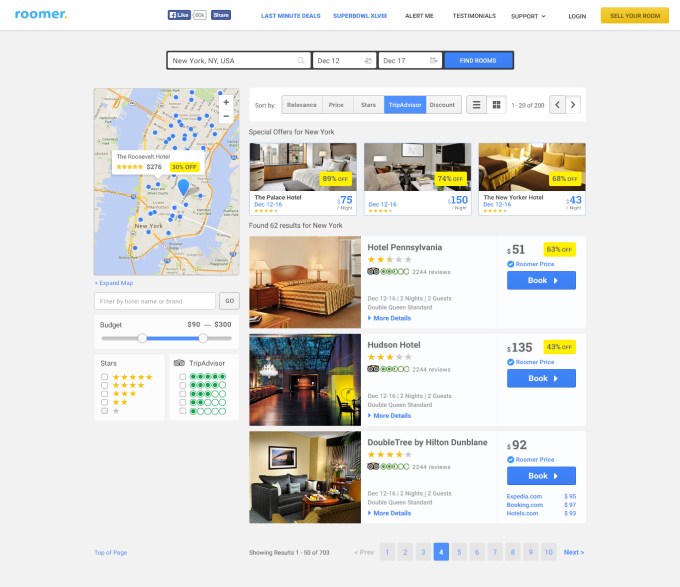Roomer is doing for hotel rooms what Airbnb did for your very own home. According to the startup, which has just raised $5 million in Series A led by Disruptive, there are 81 million hotel room cancellations in the United States every year. Roomer tries to solve that problem by letting users sell their unwanted hotel room, which would otherwise cost a cancellation fee, at a discounted price.
For the user, they avoid paying money for the unwanted room (and they might even make a few bucks), while the hotel makes far more money than they would from a cancellation fee from incidentals like WiFi, minibar, etc.
Roomer sets up through hotels and travel agencies directly, so that each time a user wants to cancel their hotel room, they’re sent to the Roomer site to list it for sale. Roomer handles everything from marketing to reservation transfer to payment out to you, all from simply sending the hotel confirmation email to the service.
The user gets all this for free, and then pays out 15 percent of the sale to Roomer in exchange for the marketing, payments, transfers, etc. And as a bonus, the hotel saves an average of $10.49 each time a cancellation call is instead routed to Roomer, according to founder Gon Ben-David.
I asked Ben-David about the possibility of someone getting entrepreneurial with Roomer and reserving 15 rooms to turn a profit, which would work against the hotels unlike the once-off cancellation.
He said the average discount on a room is 37 percent, which means that most people are just making their money back on the cancellation. In other words, it wouldn’t work well to turn a profit the same way that Airbnb has allowed some to run profitable mini-businesses. In either case, Ben-David says they’re monitoring it.

The biggest challenge to the startup, says Ben-David, is building up supply and demand and truly growing awareness, which is what some of the money will be going toward in the coming months.
To learn more about Roomer, head over to the website here.